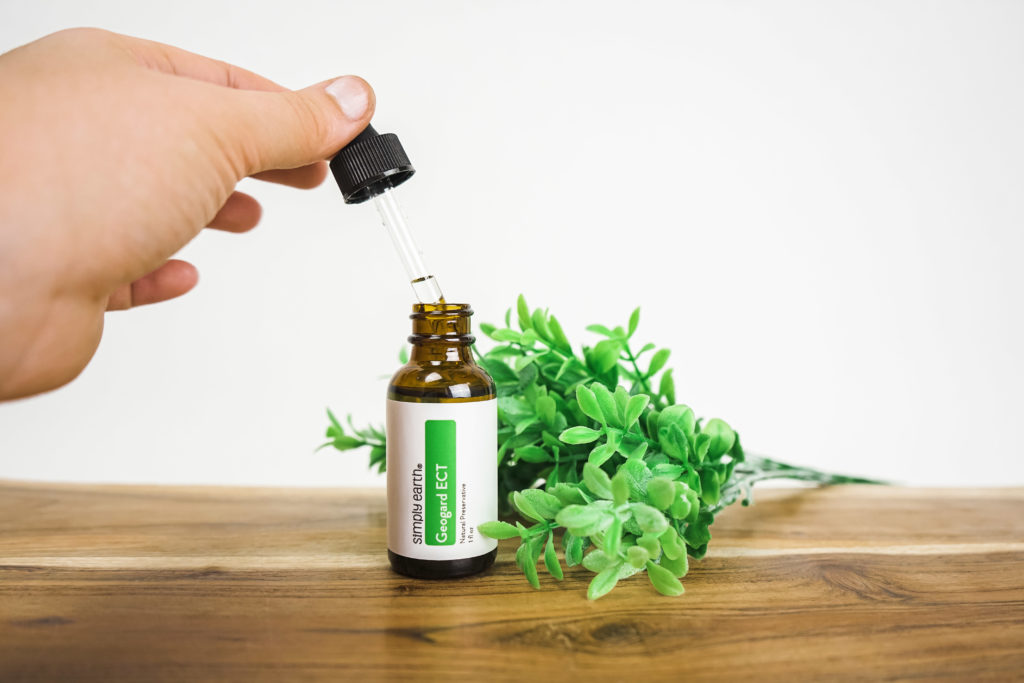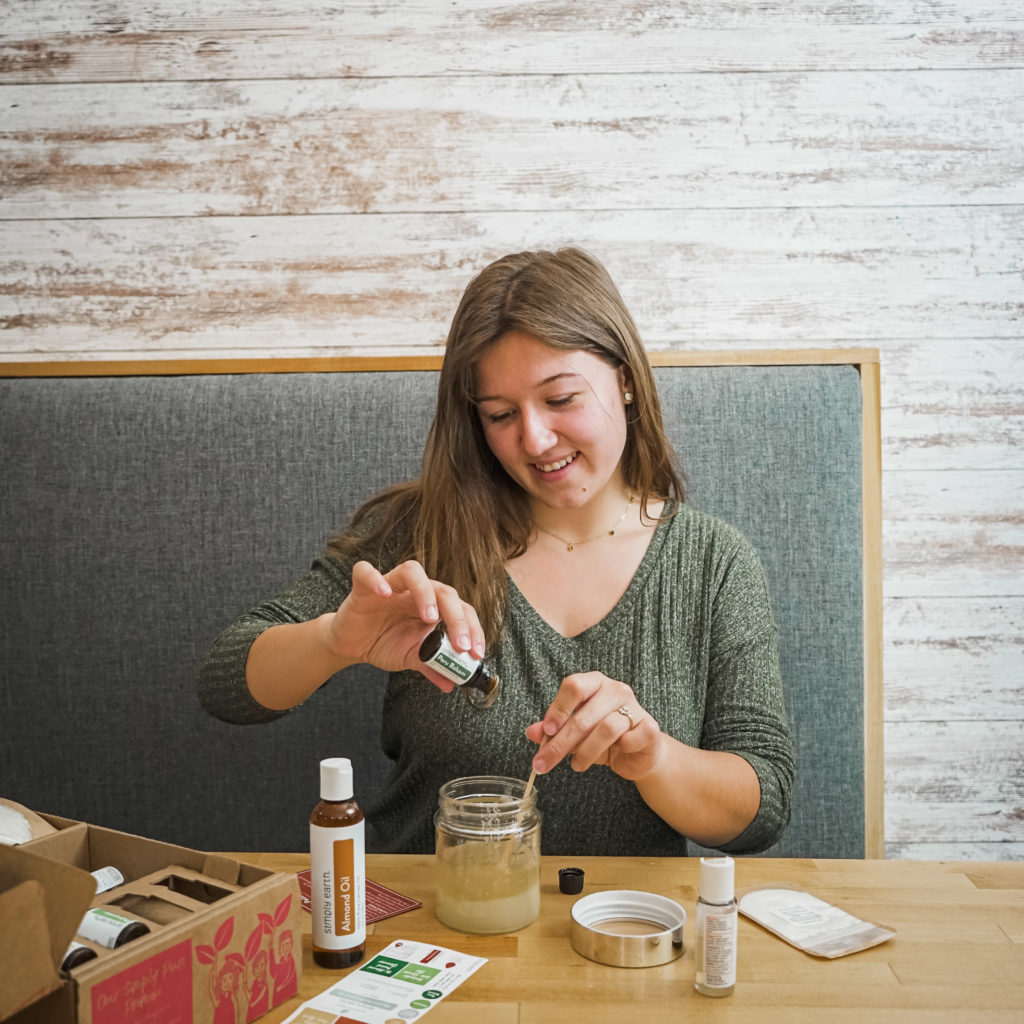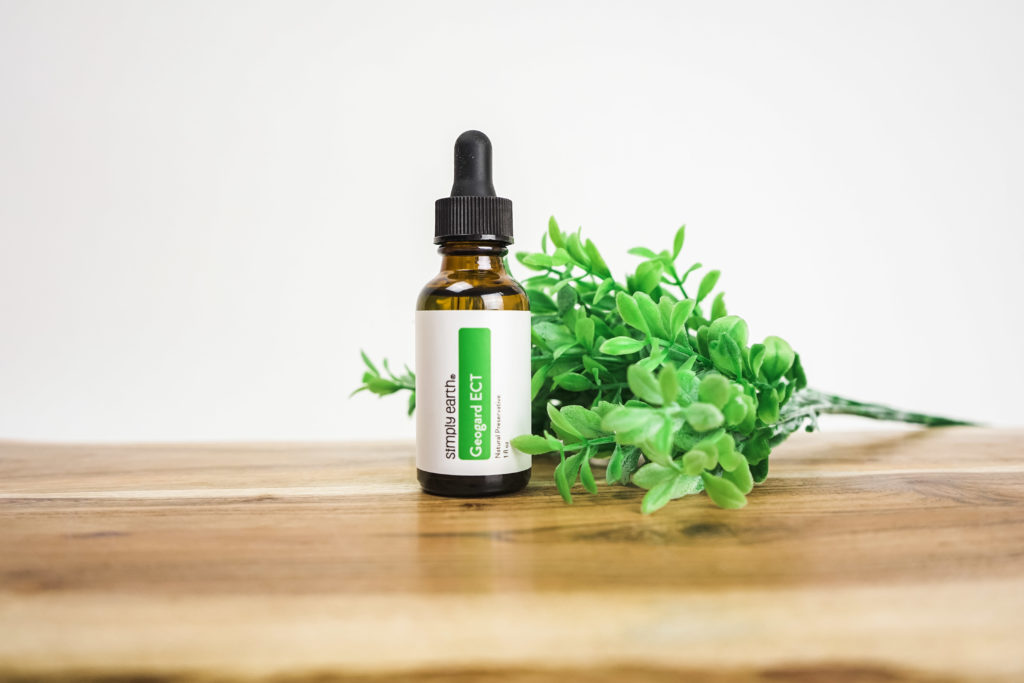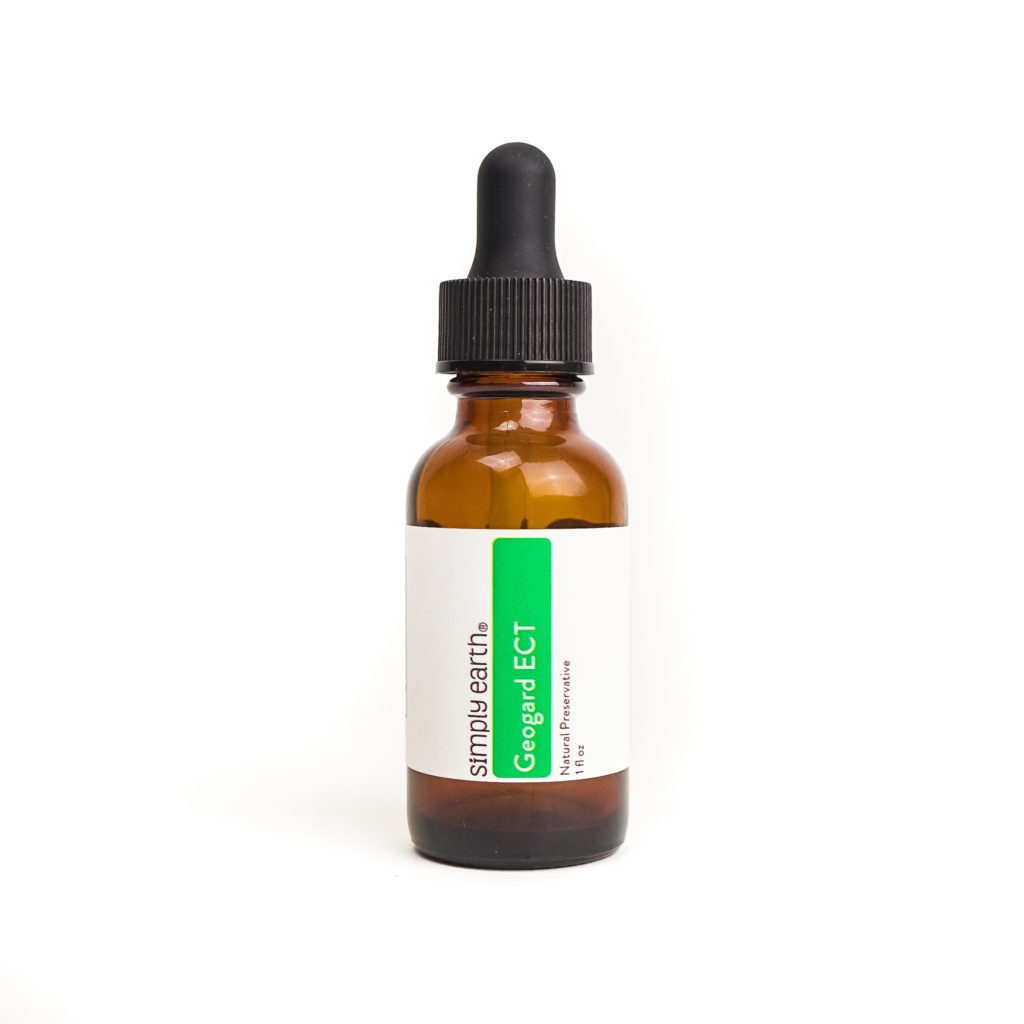Most of our Simply Earth DIY recipes are oil-based. These recipes generally have a shelf life of a year and don’t require a preservative. Recipes containing water have a bit of a different story…

Some of our recipes contain water. Anything with water in it will eventually go bad and will typically have a shorter shelf life than other recipes. In a super sanitary environment, recipes using distilled water can last up to 6 weeks.
However, that kind of environment can be difficult to attain, and most recipes using distilled water are best used within two weeks. For example, if you are using our lotion recipe in a jar and are scooping it out with your fingers, germs from your fingers are going to get into the lotion and cause it to become contaminated.
In contrast, using a container with a flip cap lid will help prevent the lotion from becoming contaminated because your hand isn’t coming into contact with the rest of the lotion. That’s one way to help support the shelf life of your product.
That’s why all of our DIY recipes containing water are made in small batches – to make it easier to use the recipe within its estimated shelf life.
We know that short-shelf lives aren’t always ideal. Maybe you want to make a larger batch, sell your products, or don’t think you’ll use it up within the expected shelf life.
In this case, the best way to preserve shelf life is to use a preservative.
Things to Consider When Using A Preservative

Using a preservative can make a simple DIY recipe into a… not so simple one.
For a preservative to work, a recipe needs to fall within a certain pH to work with the preservative, and you usually need a scale to measure it.
One other thing to note is that there is no such thing as an all-natural, full-spectrum preservative. Current natural preservatives on the market cover certain strains of bacteria and require a secondary preservative to fully preserve the product.
At Simply Earth, we believe in keeping a natural home as easy as possible. That’s why we are excited to introduce our new eco-friendly preservative: Geogard ECT.
Simply Earth’s New, eco-friendly Preservative
Our preservative is made up of safe ingredients including Benzyl Alcohol, Salicylic Acid, Glycerin, and Sorbic Acid. All of these ingredients are commonly used in personal care products and, more importantly, all occur in nature.
Geogard ECT Benefits:
- Broad-spectrum activity on bacteria, yeast, and molds
- It has very little aroma so the smell of essential oils can shine in your DIY recipes
- It works in a wide range of pH (3-8) that works with most DIY personal care products.
- COSMOS & Soil Association approved
- Meets ECOCERT standards (it can be used in organic and natural products)
- Vegan
- Non-GMO
- Cruelty-free [Not Tested On Animals]
How to Use Geogard ECT

It is best to measure out Geogard ECT on a scale. We believe that DIY recipes shouldn’t be overwhelming, so we love how easy this preservative is to use!
Geogard ECT should make up 0.6%-1% of your recipe’s total weight. So, for most products you make, all you need to do is weigh your recipe at the end and multiply the weight by 1% (0.01). Then add that amount to your product. This technique will almost always get you into the 0.6%-1% range.
If you are using heat in your recipe (like for an emulsion), make sure to add this preservative to your product AFTER it’s cooled to 113°F (45° C) or below.
About pH
Geogard works with pH levels between 3-8. To make sure Geogard ECT will work with your DIY product, it’s best to check the pH of your product first to make sure it falls in this range. Almost all Simply Earth recipes using water fall within this range unless the recipe calls for a lot of vinegar (like some of our cleaning recipes).
Once you’ve added the preservative to the recipe, it’s good to recheck that the pH level is between 5-5.5. If the levels are off, they can be adjusted using pH modifiers like citric acid or baking soda.
How to Use Geogard ECT Safely
When handling Geogard ECT, like all preservatives, it’s best to handle the product while wearing gloves, in a well-ventilated space, and to quickly clean up messes.
Some people may be sensitive to Geogard ECT and have skin irritation. It’s best to perform a small skin patch test with your finished product before using it on a larger area of skin to check for irritation.
We’ll be adding information on how to add Geogard ECT to our new recipes that contain water in our blog posts.
What recipe are you wanting to try this preservative with? We’d love to hear about it on social media with @fromsimplyearth and in the comments below!
Are you ready to master essential oils? You get FREE access to our Hero Course if you subscribe to our Monthly Essential Oil Recipe Box. With it, you’ll receive 4 pure essential oils, 6 aromatherapist-created recipes, and more—all delivered directly to your door each month for just $44.99/month. Plus, we’ll give you a FREE Big Bonus Box!
Don’t miss out on the all-natural fun that comes with the Recipe Box; get yours today: Subscribe now to learn how to use essential oils!


